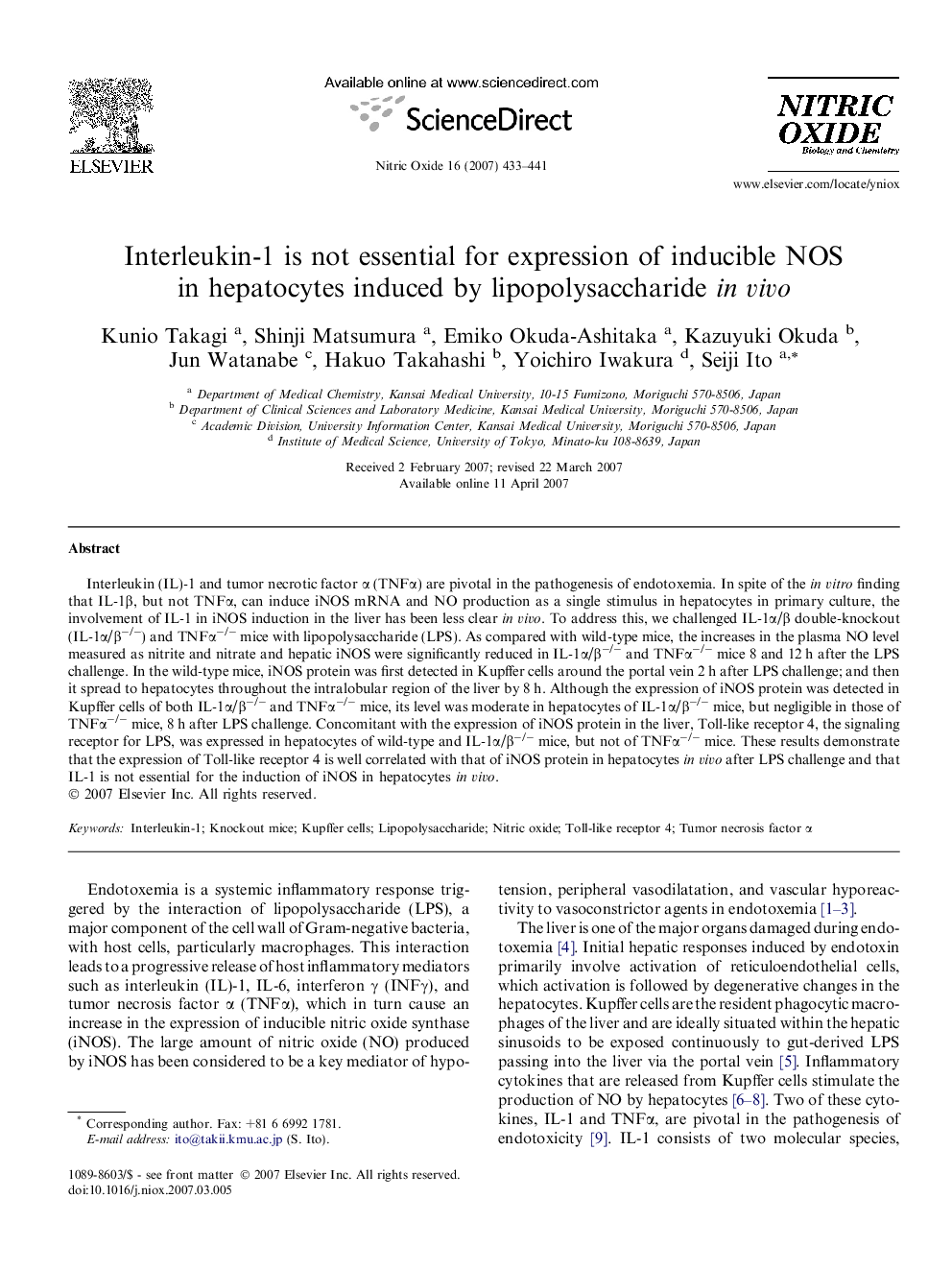| Article ID | Journal | Published Year | Pages | File Type |
|---|---|---|---|---|
| 2001979 | Nitric Oxide | 2007 | 9 Pages |
Abstract
Interleukin (IL)-1 and tumor necrotic factor α (TNFα) are pivotal in the pathogenesis of endotoxemia. In spite of the in vitro finding that IL-1β, but not TNFα, can induce iNOS mRNA and NO production as a single stimulus in hepatocytes in primary culture, the involvement of IL-1 in iNOS induction in the liver has been less clear in vivo. To address this, we challenged IL-1α/β double-knockout (IL-1α/βâ/â) and TNFαâ/â mice with lipopolysaccharide (LPS). As compared with wild-type mice, the increases in the plasma NO level measured as nitrite and nitrate and hepatic iNOS were significantly reduced in IL-1α/βâ/â and TNFαâ/â mice 8 and 12 h after the LPS challenge. In the wild-type mice, iNOS protein was first detected in Kupffer cells around the portal vein 2 h after LPS challenge; and then it spread to hepatocytes throughout the intralobular region of the liver by 8 h. Although the expression of iNOS protein was detected in Kupffer cells of both IL-1α/βâ/â and TNFαâ/â mice, its level was moderate in hepatocytes of IL-1α/βâ/â mice, but negligible in those of TNFαâ/â mice, 8 h after LPS challenge. Concomitant with the expression of iNOS protein in the liver, Toll-like receptor 4, the signaling receptor for LPS, was expressed in hepatocytes of wild-type and IL-1α/βâ/â mice, but not of TNFαâ/â mice. These results demonstrate that the expression of Toll-like receptor 4 is well correlated with that of iNOS protein in hepatocytes in vivo after LPS challenge and that IL-1 is not essential for the induction of iNOS in hepatocytes in vivo.
Keywords
Related Topics
Life Sciences
Biochemistry, Genetics and Molecular Biology
Biochemistry
Authors
Kunio Takagi, Shinji Matsumura, Emiko Okuda-Ashitaka, Kazuyuki Okuda, Jun Watanabe, Hakuo Takahashi, Yoichiro Iwakura, Seiji Ito,
